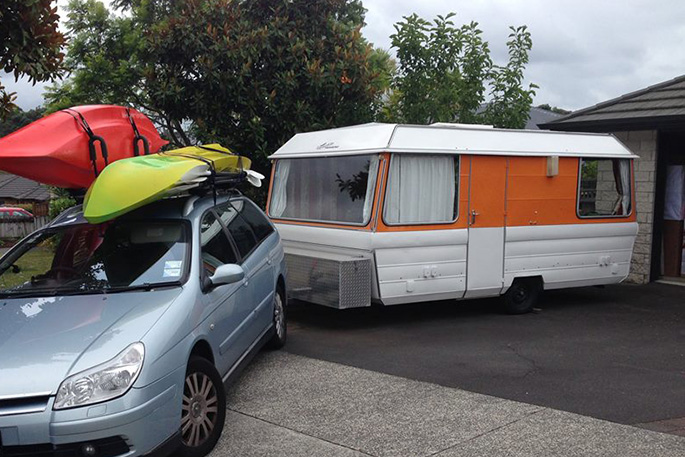My husband and I don’t do caravans. We’ve had two terrible experiences and don’t want to tempt fate a third time.
But many Kiwis love nothing better than to stuff a caravan to the brim and tow it on the open road to their summer holiday destination.
Problem is you see caravans parked up on kerbs, footpaths and roadsides all over Aotearoa during warmer months as something’s gone wrong! Don’t let it be you!
According to Waka Kotahi NZ Transport Agency seven people each year are killed and 45 seriously injured in crashes involving a light vehicle towing a trailer – this category includes caravans!
Then there’s the flat tyres, broken axles, damaged tow bars, or caravans clipped by vehicles and the rest... That’s why The Sun is sharing tips on how to tow your caravan safely this summer!
Caravans are usually light vehicles – those with a Gross Vehicle Mass under 3500kg. This means they fall within the vehicle class of light trailer, says Waka Kotahi.
While not entry-certified, you must register and license your light vehicle and take it for regular Warrant of Fitness inspections.
So if you’re getting old Betty out of the garage or the paddock, ensure it has a WOF before hitting the road so you know it’s structurally and mechanically sound.
But even if it has a WOF – re-check everything! Check tyre pressures, and look for signs of wear or damage. Clean all lights and reflectors. Check all lights are working. Ensure the tow coupling and brake mechanisms are well lubricated.
We were towing a caravan once and heard a big bang then saw our caravan wheel swiftly travel past our vehicle, cut in front of us then enter drainage and flick high up in the air.
Luckily, it didn’t hit us on the way down! We’d checked everything the day before – no lie! So be extra vigilant before you drive.
Before departing
Before departing, NZTA advises to check the tow bar points downwards before placing the trailer onto the vehicle’s tow bar.
The weight should be about 10 per cent of the weight of the trailer and load. Make test stops at low speed to check the feel of your vehicle’s brakes.
Check all doors, hatches, covers and any load or equipment are properly secured. Check trailer brakes (where fitted), tyres and wheel bearings are not overheating.
Did you know it’s illegal to carry a passenger in your caravan when travelling?
And that 90km per hour is the maximum speed when towing light vehicles on the open road?
You can only travel at this speed if you have a rigid connection between the vehicles. So check coupling and safety chains are properly fastened!
The law requires every light vehicle and trailer combination must be capable of stopping within a distance of seven metres from a speed of 30km/h.
And a car, utility vehicle or light van is not permitted to tow more than one trailer or vehicle at a time!
When traveling
When travelling NZTA advises to allow extra space for stopping.
“Allow a four-second gap between you and the vehicle ahead – even more if it’s wet or windy. Apply brakes lightly before cornering, and always use a lower gear when travelling downhill.”
And – don’t overload your caravan as this will affect its stability and control. Take breaks often – and use this time to re-check your caravan. And allow extra time for your trip.
Also, don’t hold up following traffic unnecessarily. Pull over when safe – making sure there’s suitable space for your vehicle and caravan – and allow following traffic to pass.
When parking, choose a space carefully.
“Roadside cambers can trap your caravan against poles.”
If towing a motor vehicle in darkness, the towed vehicle must display a white light towards the front that shows the towing connection and red light towards the rear of the towed vehicle.
For more helpful tips to keep safe, see: https://www.nzta.govt.nz/assets/resources/glovebox-guide-safe-loading-towing/docs/guide-safe-loading-towing.pdf



0 comments
Leave a Comment
You must be logged in to make a comment.